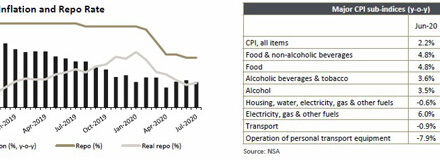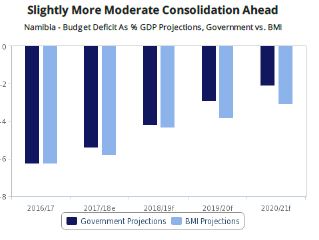
MTC grateful for “stable” regulator
Mobile telecommunications service provider MTC has heaped praise on the Communications Regulatory Authority of Namibia (CRAN) for the way the industry regulator has allowed businesses in the sector to flourish. MTC Managing Director Geraldes Miguel told the Economist recently that having “a predictable and stable regulator” was critical for investment in infrastructure and key to the company’s continued growth. In the 2013 financial year, MTC’s approved capital expenditure stood at N$467 million compared to N$415 million in 2012. Miguel said: “We are having a collaborative regulator much more than in the past. You can not have an investment of this magnitude with an unstable regulator.
They are what we call a predictable regulator and in this regard it is critical to us.” CRAN became operational in 2011 replacing the Namibian Communications Commission. CRAN regulates telecommunications services and networks, broadcasting, postal services and the use and allocation of radio spectrum. Geraldes also had kind words for majority shareholder government for letting the service provider invest a large chunk of its earnings back into the business. He said it is important for MTC to have a shareholder with a long-term vision of the company, a shareholder who is willing to invest today and only get returns after five years. “It is very critical in that the shareholder is not thinking of today but the future.” MTC is 66% owned by the government through the Namibia Post and Telecommunications Holding Company (NPTH) and 44% owned by Portugal Telecom. Namibia’s biggest mobile network operator has in the last few years reinvested a huge chunk of its profits back into the company which has enabled it to deploy advanced, faster (HSPA+ and LTE ) and high capacity networks to meet customer needs. According to Miguel, MTC is not only delivering one of the most advanced mobile data networks on the continent, on par with developed regions, but is also well-prepared for the data demand tsunami that will arise over the next three to five years. “All the tremendous investments and efforts in terms of infrastructural improvements, the submarine cable, the national fibre backbone, the advanced 3G Single RAN and the 4GLTE radio networks, as well as the migrated IP core systems, are evident in the delivery of excellent mobile bandwidth.” He said the explosion in demand by users for voice, SMS and data services, during the last three years, placed MTC’s infrastructure under tremendous pressure, adding that this required massive investment to guarantee long term sustainability. “Just in the year under review, data volume usage duplicated, reaching 1.2 Gigabit per second! Technology like 4G/LTE , the IP backhauls through fibre or microwave systems, the metro rings and the national fibre backbones through the DWDM 40G (Dense Wavelength Division Multiplexing), with connections to the undersea cable West Africa Coast System (WACS) are highly relevant projects that continuously expanded during the year under review.” Among the many capital projects implemented, MTC carried out the RAN SWAP Project, replacing Base Stations by new technology in all regions outside Windhoek, encompassing a phased implementation planned for three years. The north and most of the central regions of Namibia and the Coastal area of Swakopmund and Walvis Bay were implemented at end 2012 and end 2013. MTC also saw the implementation of 4G/LTE in eight towns outside Windhoek, namely Swakopmund, Walvis Bay, Oshakati, Otjiwarongo, Ongwediva, Tsumeb, Outapi, and Keetmanshoop as well as re-enforcing redundancy of international connectivity via WACS and SAT-3 submarine cables, providing high capacity international internet connectivity via Lisbon, London and Cape Town.













































